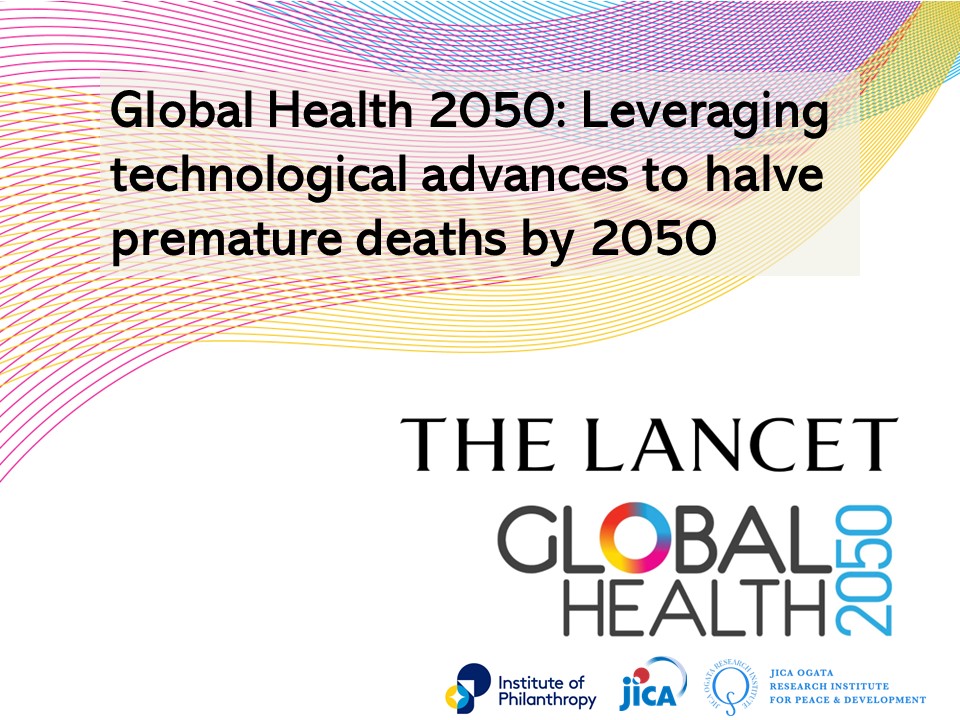Side Meetings
SMB129
Global Health 2050: Leveraging technological advances to halve premature deaths by 2050
29
Jan
- Japan International Cooperation Agency
- Institute of Philanthropy
- Lancet Commission on Investing in Health

The Lancet established a Commission on Investing in Health (CIH) in 2012 to mark the occasion of the 20th anniversary of publication of the World Bank’s 1993 World Development Report, “Investing in Health.” The commission was chaired by Lawrence Summers, former US Treasury Secretary and President Emeritus of Harvard University, and co-chaired by Dean Jamison at the University of Washington. Summers was the Chief Economist at the World Bank who commissioned WDR93 and Jamison led the report’s development. The Lancet published the first report of the CIH in 2013, titled “Global Health 2035: a world converging within a generation”. Rising geopolitical tensions, challenges to globalization, violent conflicts, climate change, population aging, and, most significantly, the COVID-19 pandemic have defined the years subsequent to publication of the second report. Given that 2023 marks the ten-year anniversary of CIH 1.0, and that the global development landscape has changed so much during this past decade, The Lancet invited the CIH to develop a CIH 3.0 report to assess the state of global health in a post-COVID world. We launched the report, “Global health 2050: the path to halving premature deaths by mid-century” in October 2024 at the World Health Summit in Berlin.
One of the key conclusions of the report is that halving the probability of premature mortality (defined as deaths before age 70) by 2050, or “50 by 50” is feasible, in large parts due to the availability of new cutting-edge technologies on the horizon. Our background paper found that there are currently 1498 candidate drugs, vaccines, and diagnostics in the product development pipeline for neglected diseases, emerging infectious diseases, and maternal health conditions. It is estimated that investing in research and development to advance these candidates would yield 453 product launches between 2023 and 2044 under a conservative base-case scenario. With better coordination, an even larger number of products could be launched. The incremental cost beyond current spending on research and development, would be $1.4–7 billion annually, depending on the complexity of the product candidates being launched. Substantial cost savings could be achieved—about $9 billion from 2023 to 2044—if ecosystem efficiencies, such as artificial intelligence and smart clinical trial designs, were to be implemented.
This session will first focus on the reflections of the CIH key messages since the launch in October 2024, and the progress of the on-going country commissions in Nepal, Nigeria, USA, and China. The report received wide attention, with both positive and constructive responses from its audience. PMAC 2025 will be a good opportunity to critically reflect on them. The second session will focus on the key messages on pandemic preparedness and response from the report. This will be a follow up to the discussions at PMAC 2024.

